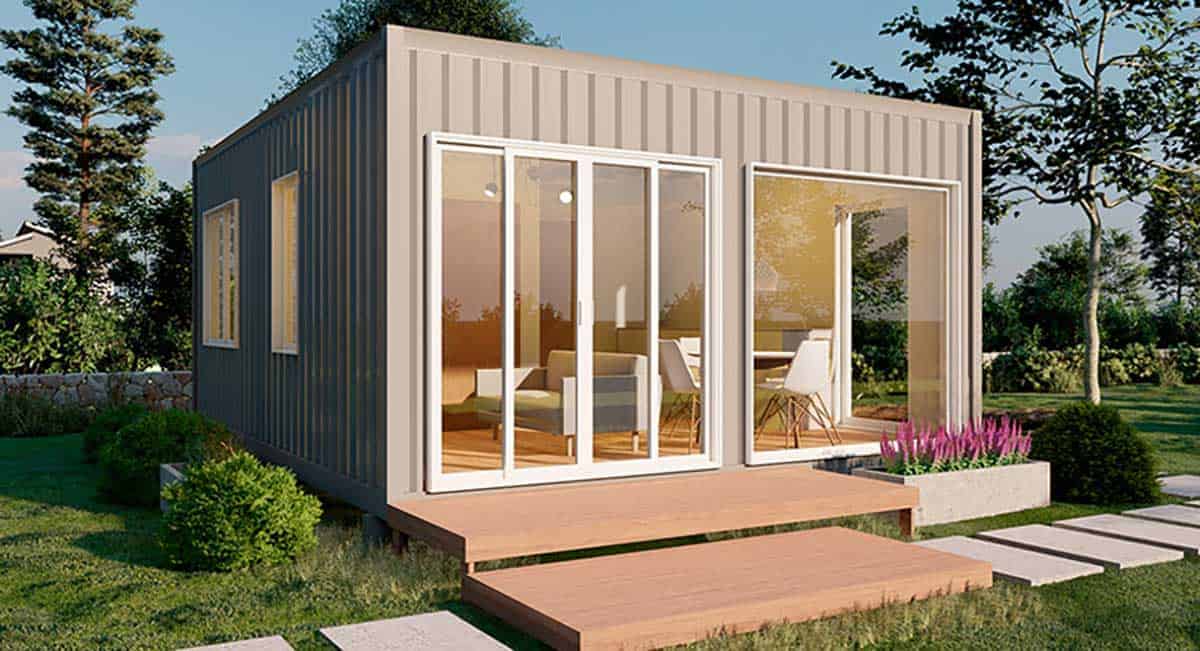
Blok container home
Step-by-step Guide to Building a Container House in Malaysia
Table of Contents
- Introduction
- Selecting a Suitable Location
- Understanding Building Regulations
- Designing Your Container House
- Sourcing and Preparing the Containers
- Foundation and Site Preparation
- Structural Modifications
- Insulation and Climate Control
- Plumbing and Electrical Systems
- Interior Finishing
- Exterior Finishing
- Landscaping and Outdoor Spaces
- Final Inspections and Certifications
- Moving In and Settling Down
- Conclusion
- FAQs
1. Introduction
Container houses have revolutionized the housing industry with their innovative design and sustainable construction methods. In Malaysia, the popularity of container houses is steadily growing due to their affordability, versatility, and eco-friendly nature. This step-by-step guide will provide you with valuable insights and guidance on building your very own container house in Malaysia.
2. Selecting a Suitable Location
The first step in building a container house is selecting a suitable location. Consider factors such as accessibility, proximity to amenities, and the availability of utilities. Additionally, take into account the local building regulations and any restrictions that may impact your choice of location. Careful planning and research will ensure that your container house is situated in an ideal spot that meets both your practical and aesthetic preferences.
3. Understanding Building Regulations
Before embarking on your container house project, it is crucial to understand the building regulations and obtain the necessary permits and clearances. Contact the local authorities and relevant government agencies to familiarize yourself with the specific regulations and requirements in your area. This may include building permits, land-use permits, environmental clearances, and structural certifications. Adhering to these regulations will ensure a smooth construction process and avoid any legal complications.
4. Designing Your Container House
Designing your container house is an exciting phase where you can unleash your creativity. Collaborate with an architect or a professional designer to create a design that maximizes space, functionality, and natural light. Consider the number of containers you’ll need and how they can be arranged to accommodate your desired layout. Take into account factors such as insulation, ventilation, and energy efficiency during the design process. By carefully planning the design, you can create a container house that is both aesthetically pleasing and practical for your needs.
5. Sourcing and Preparing the Containers
Once you have a design plan in place, it’s time to source the shipping containers. Look for reputable suppliers who offer structurally sound containers that meet your specifications. Inspect the containers for any damage, rust, or other structural issues. Prepare them for construction by cleaning, sandblasting, and applying anti-corrosion treatments. Properly preparing the containers will ensure their longevity and structural integrity.
6. Foundation and Site Preparation
A solid foundation is essential for the stability and longevity of your container house. Engage a professional contractor to determine the appropriate foundation type based on your soil conditions and building requirements. Prepare the site by leveling the ground, clearing any obstacles, and ensuring proper drainage. A well-designed and properly constructed foundation will provide a strong base for your container house.
7. Structural Modifications
Container houses require some structural modifications to ensure stability and accommodate doors, windows, and other openings. Engage the services of a qualified contractor who has experience working with container structures. They will reinforce the containers, cut openings for doors and windows, and connect multiple containers if necessary. Proper structural modifications are crucial to ensure the safety and structural integrity of your container house.
8. Insulation and Climate Control
Insulating your container house is essential to maintain a comfortable indoor temperature and reduce energy consumption. Consider using insulation materials suitable for the local climate. Install insulation on the walls, ceilings, and floors, and seal any gaps to prevent heat transfer. Additionally, explore options for natural ventilation and energy-efficient cooling systems. By effectively insulating your container house, you can create a comfortable living environment while minimizing your environmental impact.
9. Plumbing and Electrical Systems
To make your container house fully functional, you’ll need to install plumbing and electrical systems. Hire licensed professionals to handle these installations safely and according to the local building codes. Plan the layout carefully to optimize space and ensure easy access to essential utilities such as water, electricity, and sewage. Properly installed plumbing and electrical systems are essential for the convenience and functionality of your container house.
10. Interior Finishing
The interior finishing touches will give your container house its unique character and reflect your personal style. Consider using eco-friendly and sustainable materials for flooring, walls, and ceilings. Pay attention to lighting, furniture arrangement, and storage solutions to create a comfortable and functional living space. The interior finishing will transform your container house into a cozy and inviting home that suits your lifestyle and preferences.
11. Exterior Finishing
The exterior finishing of your container house is equally important for aesthetics and protection against the elements. Explore various cladding options such as timber, metal, or composite materials. Choose a finish that suits your design preferences while providing durability and weather resistance. Additionally, consider incorporating architectural elements and landscaping to enhance the overall appeal of your container house.
12. Landscaping and Outdoor Spaces
Create an inviting outdoor area around your container house by incorporating landscaping elements. Plant native trees and shrubs, design a patio or a deck, and consider installing rainwater harvesting systems. Make the most of the available space to create a serene and sustainable outdoor living environment. Well-designed landscaping and outdoor spaces will complement your container house and provide additional areas for relaxation and enjoyment.
13. Final Inspections and Certifications
Before you can move into your container house, it must undergo final inspections and obtain the necessary certifications. Engage qualified inspectors to evaluate the structural integrity, electrical and plumbing systems, and overall compliance with building codes. Once you pass the inspections and obtain the certificates, you’re one step closer to enjoying your new home. Final inspections and certifications provide assurance that your container house is safe, functional, and built to the required standards.
14. Moving In and Settling Down
Once your container house is ready and all legal requirements are fulfilled, it’s time to move in and settle down. Furnish the house according to your needs and preferences, and take the time to enjoy your unique living space. Embrace the sustainable lifestyle and the sense of accomplishment that comes with building your own container house. Personalize your container house with your belongings and make it a place you can truly call home.
15. Conclusion
Building a container house in Malaysia offers an exciting opportunity to create an affordable, sustainable, and personalized living space. From selecting the right location to obtaining permits, designing the house, and handling the construction process, this step-by-step guide has provided you with a comprehensive overview of what it takes to build a container house. Embrace the journey and embark on a rewarding experience that combines innovation, sustainability, and creativity.
FAQs
- Can I build a container house on any type of land?
Yes, container houses can be built on various types of land, including residential, commercial, and rural areas. However, it’s important to consider local regulations, soil conditions, and site suitability before proceeding with the construction. Some areas may have specific zoning requirements or restrictions that need to be taken into account.
- Are container houses eco-friendly?
Yes, container houses are considered eco-friendly. By repurposing shipping containers, which would otherwise go to waste, container houses contribute to reducing environmental impact. They also have a smaller carbon footprint compared to traditional construction methods. Additionally, container houses can incorporate sustainable features such as energy-efficient insulation, natural ventilation systems, and rainwater harvesting.
- How long does it take to build a container house?
The construction time for a container house can vary depending on various factors such as the design complexity, site conditions, and the availability of labor. Generally, building a container house can take anywhere from a few months to over a year. It’s important to consider these factors and set realistic expectations regarding the construction timeline.
- Can I modify the containers myself?
While some basic modifications can be done by individuals with construction experience, it’s advisable to hire professionals for structural modifications and ensure compliance with building codes. Structural modifications require specialized knowledge and skills to ensure the safety and integrity of the container house. It’s important to engage qualified professionals who have experience working with container structures.
- Are container houses durable?
When built and maintained properly, container houses can be durable and withstand various weather conditions. Shipping containers are designed to withstand the rigors of international shipping, making them inherently sturdy. However, it’s essential to properly insulate the containers, address any potential rust or corrosion issues, and conduct regular maintenance to ensure their longevity. With proper care, a container house can provide a durable and comfortable living space for many years to come.
This extended version of the article provides a comprehensive guide to building a container house in Malaysia. By following these step-by-step instructions, individuals interested in container housing can confidently embark on their own construction project. From site selection to obtaining permits, design considerations, construction techniques, and finishing touches, this guide covers all aspects of creating a unique and sustainable container house. Enjoy the journey of building your own container house and embrace the benefits of affordability, eco-friendliness, and architectural innovation.
Desain Rumah Kabin
Rumah Kabin Kontena
Harga Rumah Kabin
Kos Rumah Kontena
Rumah Kabin 2 Tingkat
Rumah Kabin Panas
Rumah Kabin Murah
Sewa Rumah Kabin
Heavy Duty Cabin
Light Duty Cabin











